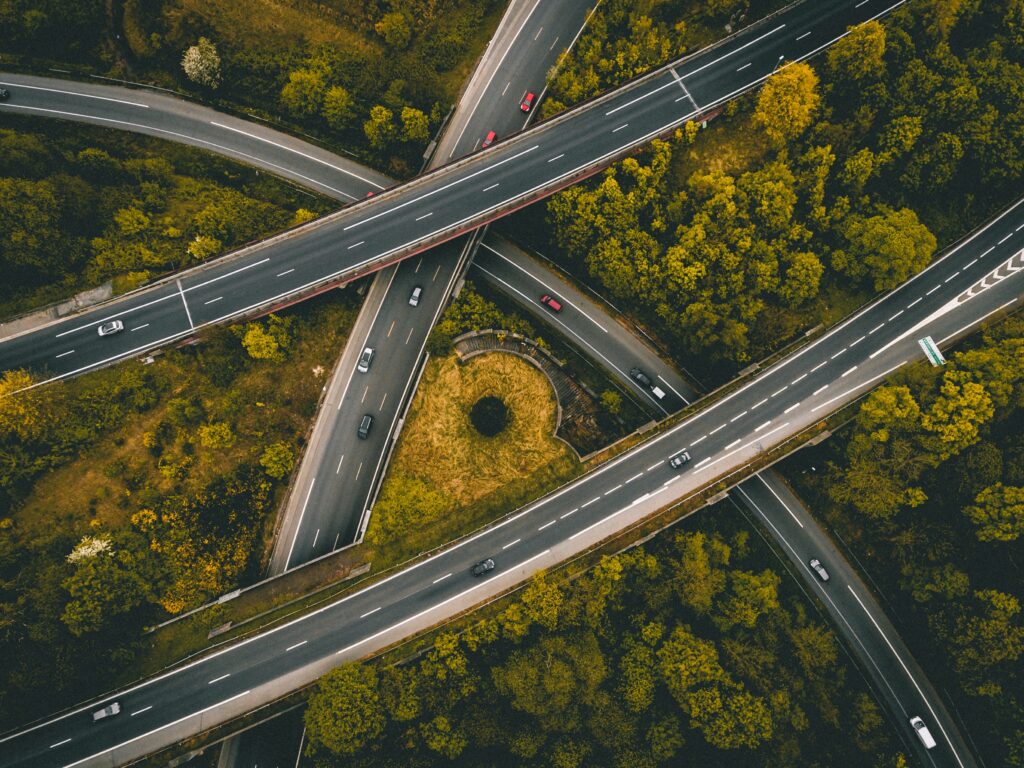Introduction
Purvanchal Expressway Project: The Yogi Adityanath-led Uttar Pradesh government reopened the previous government’s Lucknow-Azhamgarh-Ballia Expressway as the Purvanchal Expressway. The Purvanchal Expressway Project was constructed by the government of Uttar Pradesh. There are many benefits. Construction was done by connecting many places. This structure has many advantages.

Table of Contents
- Purvanchal Expressway Project About
- Purvanchal Expressway Routes
- Purvanchal Expressway Route Map 2024
- Present Construction Status
- 5 Benefits of the Purvanchal Expressway
Prime Minister Narendra Modi inaugurated the Purvanchal Expressway on November 16, 2021. It is an infrastructural project that the state Chief Minister Yogi Adityanath called the ‘backbone of the economy of eastern Uttar Pradesh’. The development comes three years after Modi laid the foundation stone for the Purvanchal Expressway in Azamgarh in July 2018.
Billed as the ‘carrier of development’ for the underdeveloped eastern region of UP, the Purvanchal Expressway is arguably one of the biggest infrastructure projects completed by the CM-Yogi-led Uttar Pradesh government.
Purvanchal Expressway Project About
The Purvanchal Expressway is an important infrastructure project in Uttar Pradesh, India. Let’s take a look at its key features:
Route and Length
The expressway stretches from Chand Sarai village on Lucknow-Sultanpur Road (NH-731) in Lucknow district, near Hydaria village on National Highway No. 19, 18 km before the UP-Bihar border in Ghazipur district. The total length of this fully access-controlled 6-lane expressway is 340.824 kilometers. It is designed to expand to 8 lanes in the future.
Districts Covered, Project Cost
The estimated cost of the Purvanchal Expressway project, including land acquisition, is Rs. 22,494.66 crore. The expressway passes through several districts, including Lucknow, Barabanki, Amethi, Sultanpur, Ayodhya, Ambedkar Nagar, Azamgarh, Mau, and Ghazipur.
Execution and Expiration
The project is divided into 8 packages for implementation. Contracts with developers for all packages start in October 2018. The last date for completion is October 2021. On November 16, 2021, the Hon’ble Prime Minister inaugurated the Expressway at Kurebhar Airstrip in Sultanpur District.
Distinctive features
The Purvanchal Expressway consists of distinct features.
- 22 flyovers
- 7 Railway Over Bridges (ROBs)
- 7 major bridges
- 114 minor bridges
- 6 toll plazas
- 45 Vehicle-Under Passes (VUPs)
- 139 Light VUPs
- 87 Pedestrian Underpasses
- 525 box culverts
Purvanchal Expressway Routes
While connectivity networks indicate the state’s economic progress, the Uttar Pradesh government is making significant efforts to upgrade its road networks. The project is an example. The Purvanchal Expressway covers key cities in eastern Uttar Pradesh.
The Purvanchal Expressway route is intended to provide an economic boost to underdeveloped cities in India’s most populous state through better connectivity. Apart from Lucknow and perhaps Barabanki, all other cities along the route of the Purvanchal Expressway are underdeveloped cities.
Routes in project
- Lucknow
- Barabanki
- Ayodhya
- Sultanpur
- Ambedkar Nagar
- Azamgarh
- Mau
- Ghazipur
Purvanchal Expressway Route Map 2024
The Purvanchal Expressway route forms a direct link between Delhi and eastern Uttar Pradesh while also connecting it to the Bihar border. The 343-km highway begins at Chand Sarai village in Lucknow, on the Lucknow-Sultanpur Road (NH-731). Ends at Hydaria village in Ghazipur on NH31.
In between, the Purvanchal Expressway also includes Barabanki, Amethi, Sultanpur, Ayodhya, Ambedkarnagar, and Mau. As a result, the Purvanchal Expressway connects nine districts of UP. It is also connected with other cities of religious importance like Varanasi, Ayodhya, and Gorakhpur through link roads.
Present Construction Status
In October 2015, the Yogi Adityanath-led government of Uttar Pradesh re-launched the previous government’s Lucknow-Ajamgarh-Ballia Expressway as the Purvanchal Expressway. In July 2018, Prime Minister Modi laid the foundation stone for the expressway at Azamgarh.
Developed by the Uttar Pradesh Expressway Industrial Development Authority (UPEIDA). The six-lane access-controlled Purvanchal Expressway is expected to be completed by March 2021. However, it was the second wave of the coronavirus pandemic that forced Uttar Pradesh to introduce fragmented lockdowns, delaying the work.
5 Benefits of the Purvanchal Expressway
The Purvanchal Expressway is an important step towards the goal of a five trillion-dollar national economy envisioned by the Prime Minister.
- Employment generation
60,00,000 man-days were created in the construction of the Purvanchal Expressway. There are also opportunities to set up industrial training institutes, educational and training institutes, medical institutes etc. near the expressway.
- Connectivity boosting
With the construction of the expressway, the eastern part of the state to the state capital. Our national capital is connected by the Yamuna Expressway, a fast and easy traffic corridor.
- Boost to Tourism
The construction of the expressway will contribute to the development of tourism in the areas covered by the project. It will give impetus to the all-round development of these eastern regions.
- A boost to industries
The expressway acts as a catalyst for setting up the handloom industry, food processing units, storage plants, and dairy industries. Substantial savings are also possible in controlling emissions from vehicle fuel consumption.
- Boost to Business
The expressway connects various manufacturing units and development centers located in the areas covered by the state capital and the national capital. It serves as an industrial corridor to connect agricultural production areas.
Conclusion
In October 2015, the Yogi Adityanath-led Uttar Pradesh government reopened the Purvanchal Expressway and rapidly developed it. This brings many benefits to many People. For more information, visit Openplot.
Also Read: Uttar Pradesh Govt allots Rs. 2057 crore for the Ganga Expressway